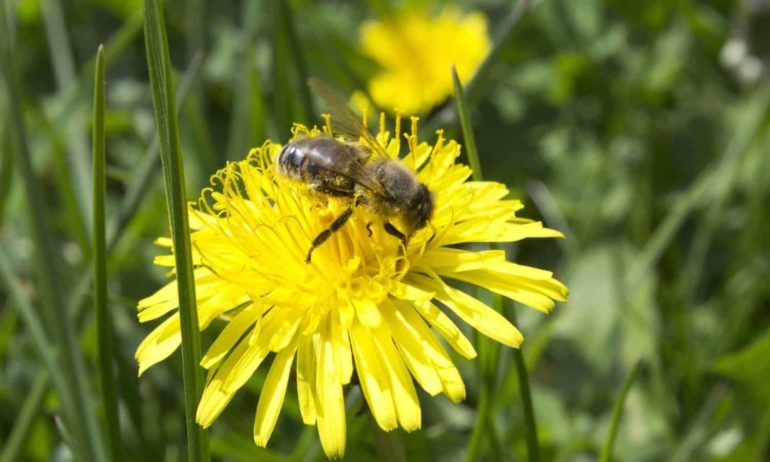 |
| bee |
Food Farm News (FFN): Can you tell us about why you decided to paint 50,000 honeybees on murals around the world?
Matthew Willey (MW): This decision was sparked by one little bee landing in the middle of my studio floor in New York City about eight years ago. She was dying, so she was moving very slowly, and I could get up real close and look at her. I saw how beautiful these creatures are for the first time. A couple of hours later, when she died, I started googling honeybees and came across a behavior called “altruistic suicide.” When a bee feels sick in the hive, they will immediately leave the hive and fly off into the abyss for ‘the good of the hive.’ The immune system of a bee is collective and based on the health of the hive itself, which fascinated me. I was initially just going to do one bee mural in LaBelle, Florida. But when I was there, I learned a lot more about the problems they (and we) are facing and the people that came together around that mural were amazing, so I decided to expand the idea of one mural about the bees, to the number in a healthy, thriving, hive… 50,000.
FFN: There has been a significant drop in bee populations since 2005, what do you see as the biggest threats to honeybee populations worldwide?
MW: The problems the bees and other pollinators face are multi-faceted. It is development/diminishing habitat, widespread pesticide use, mono-crop farming and climate change. The one thing I feel confident about is that every problem the honeybees have appears to be as a result of human activity, which is a good thing in that it offers hope that we can turn it around.
FFN: Community connection, between hives of bees or groups of people, is a strong theme that runs through your work. Have there been examples of people experiencing greater community connection as a result of your murals?
MW: The murals have a way of becoming a point of focus within the communities I paint. I think people often feel helpless with big issues like pollinator population decline. But when they are painted large-scale on a prominent wall in town, it not only serves as a reminder of how amazing these little creatures are, they become a point of pride that show community support for this significant issue. People do gather around them and talk and take pictures with the bees. Sometimes we show outdoor movies about bees on the walls as I am painting. We’ve even had guided meditations at times.
FFN: When all 50,000 bees are painted, and you have reached your goal, what do you see yourself doing next?
MW: I do have an idea… but I’m not ready to share it yet. The 50,000 bees are going to take 10 -12 years for me to complete, maybe longer. The idea is to stay on this issue until everyone in the world is aware of what is going on with the bees. So, until that happens, there is nothing ‘next’ for me. The bees need our full attention right now. It is a very complex issue, and a lot of people need to come together if we are going to solve it.









No comments:
Post a Comment